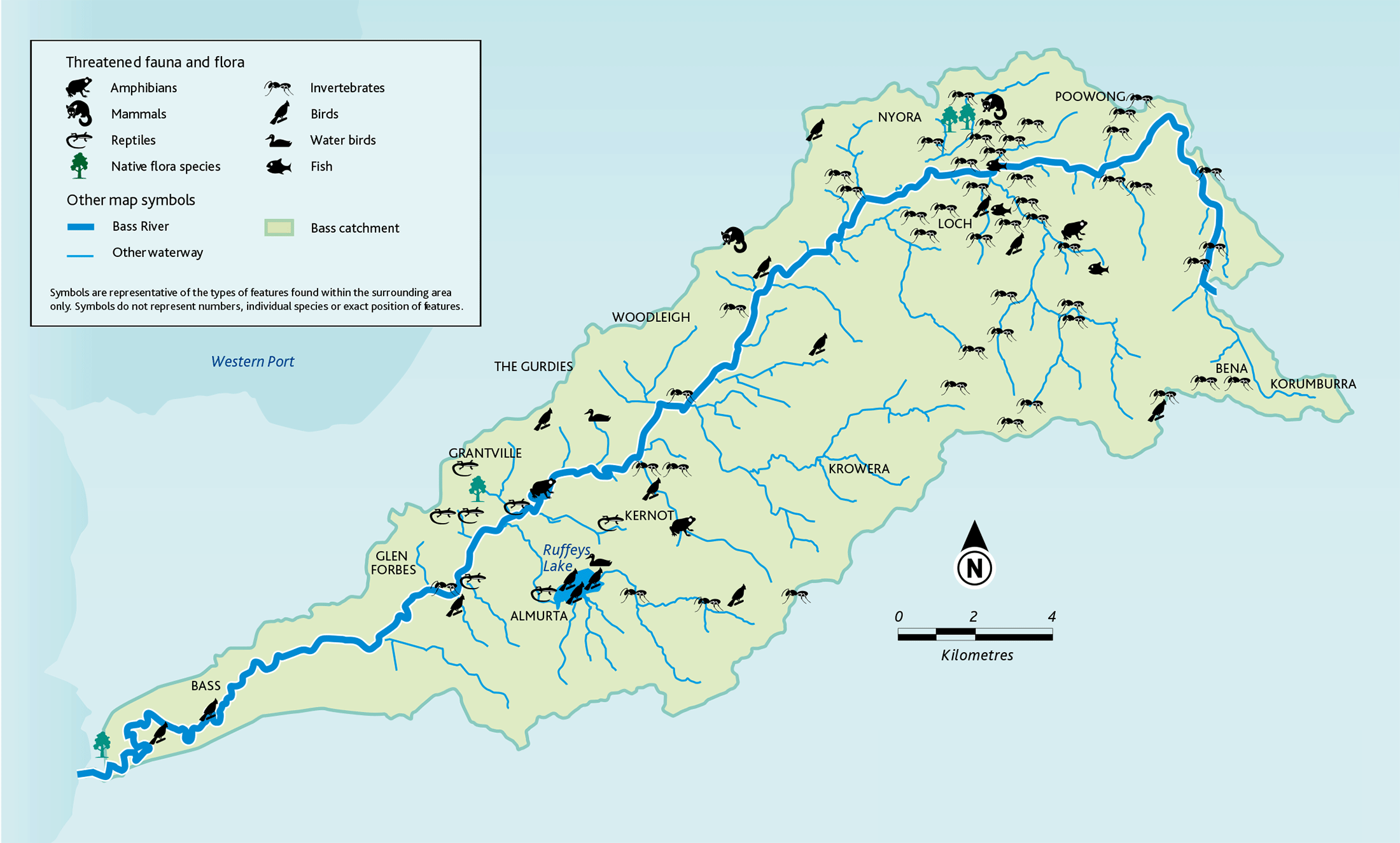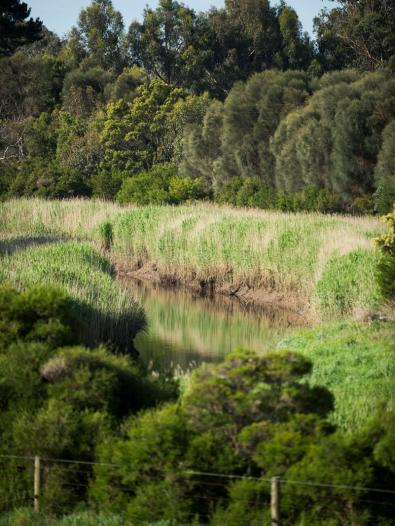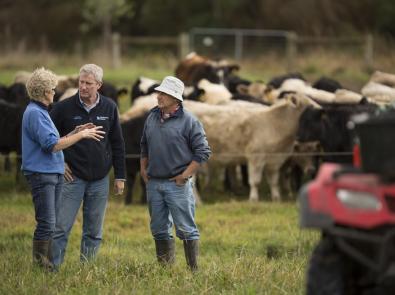Named after explorer George Bass, the 30-kilometre Bass River begins in West Gippsland’s Strzelecki Ranges and flows through the flat expanses of the Bass Valley into Western Port.
Get to know the river:
History
Throughout history, the Bass River has been valued by many cultures as a source of food, shelter and water, and a place of spiritual connection. The area has seen many changes over time – from the draining of Koo Wee Rup Swamp for agricultural land, to the clearing of the once-extensive forest that has resulted in the vast grasslands visible today.
The Boon Wurrung people have been the area’s custodians for over 40,000 years. Abundant fresh water and food – such as yabbies, fish, bats and owls – sustained large communities, evidenced by the archaeological and ethnographic sites recorded in area. These include scar trees (possibly used for canoes or shields), shell middens, artefact scatters and contact sites.
Europeans discovered Western Port in 1798 during George Bass’s exploration of the southern mainland coast. This marked the beginning of Victoria’s recorded history, with the state’s first settlement built north of the river mouth in 1826 and the Bass township in 1835. Many local features bear this name: the Bass Highway, Bass Ranges, and of course, the Bass River.
Natural features
The river is the only waterway in the Westernport catchment with a natural active delta. This has been formed by sediment deposited as water enters the bay, and includes mangrove swamps, saltmarsh and beach ridges.
Remnants of native vegetation line the river and provide important habitat for native animals and plants, like the swamp lily. Billabongs and wetlands can be found throughout the floor of the valley, which features fault rock ranges of sandstones and mudstones.
The river flows through an estuary before finally reaching Western Port. The estuary is covered with coastal saltmarsh, estuarine grassland and mangrove shrubs.
Wildlife
You can enjoy a variety of wildlife in their natural surrounds, thanks to a number of revegetation projects. Native animals include the swamp wallaby, common brushtail possum, ringtail possum, laughing kookaburra, white-fronted chat and echidna. The area is also home to the rare swamp antechinus (a small marsupial mouse).
Local highlights include:
- Fish: the variety of fish make the Bass River an ideal fishing spot. Surveys dating back to 1972 recorded 19 species of fish, including 15 estuarine and four freshwater species.
- Birds: more than 140 species live in the Bass Valley, including the iconic laughing kookaburra. Common species include the whitefronted chat, powerful owl and barking owl.
- Mammals: you can find three varieties of possum and one of Australia’s most loved and recognised animals, the platypus, which is classified as a regionally significant species.
- Plants: the manna gum and swamp gum are the dominant native tree species, with the smaller blackwood also common.
For an in-depth look at plant and animal species you might find, view our wildlife guide:
Places to visit
Most of the river runs through Crown frontage land licensed to adjoining farms, but it can be accessed at the Bass township and Bass River fishing area.
- Bass Township Arboretum has been built by the local Landcare group, and features a walkway through the plantings and signage that details the area’s history native species.
- Bass River fishing area and boat ramp are located near the mouth of the river, at the end of Bass Landing Road (off the Bass Highway past the Bass River Bridge).
Protecting the river
The Bass is one of the few rivers without a forested upper catchment, and water quality varies as a result. Overall it is in moderate condition, with the best sections found where there is native streamside vegetation.
Many inspiring people are doing a great job to protect the river and its tributaries from the impacts of surrounding farms and farm dams. For example, the Friends of Bass Valley Bush Inc Landcare Group have worked with landowners to fence livestock off from the river and replant the frontage.
In the lower reaches, we’re working with Parks Victoria and the Department of Sustainability and Environment to protect the sensitive estuary environment from Spartina, an invasive grassy weed. This weed is threatening coastline habitat, which is an important feeding ground for the critically-endangered orange bellied parrot.
Community champion: Phil Westwood – Friends of Bass Valley Bush Inc. Landcare Group
“I’ve been interested in caring for the Bass River since buying a farm with river frontage 24 years ago.
I enjoy watching platypus, water rats, blackfish and galaxia swimming and kingfishers diving into the river. A highlight for me was walking through the last of the riparian forest and finding bobucks (mountain brushtail possums), believed to be locally extinct.
Local groups play a huge part in caring for the waterway. My group is working to identify in-stream biota, caring for streamside vegetation and wildlife, and providing advice on ways to minimise sedimentation.”
You may also like...
Rivers and creeks
Rivers and creeks are central to everyday life, sustaining a complex ecosystem of plants and animals – and providing natural spaces for people to enjoy. Get to know some of Melbourne’s major waterways and the vital role they play.
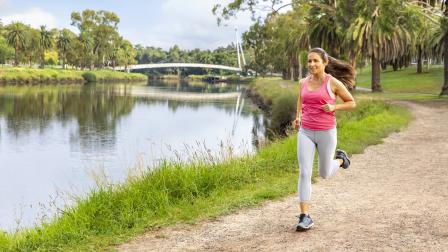
Grants
Learn about grants available to support innovation, liveability and collaboration across water management, and improve river health.
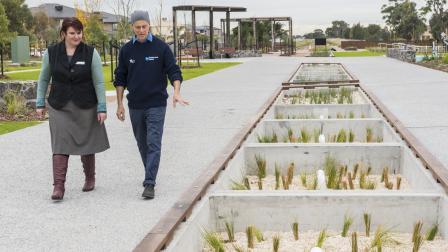
View annual progress towards 10-year targets for waterways in the catchment, as set out in the strategy.
